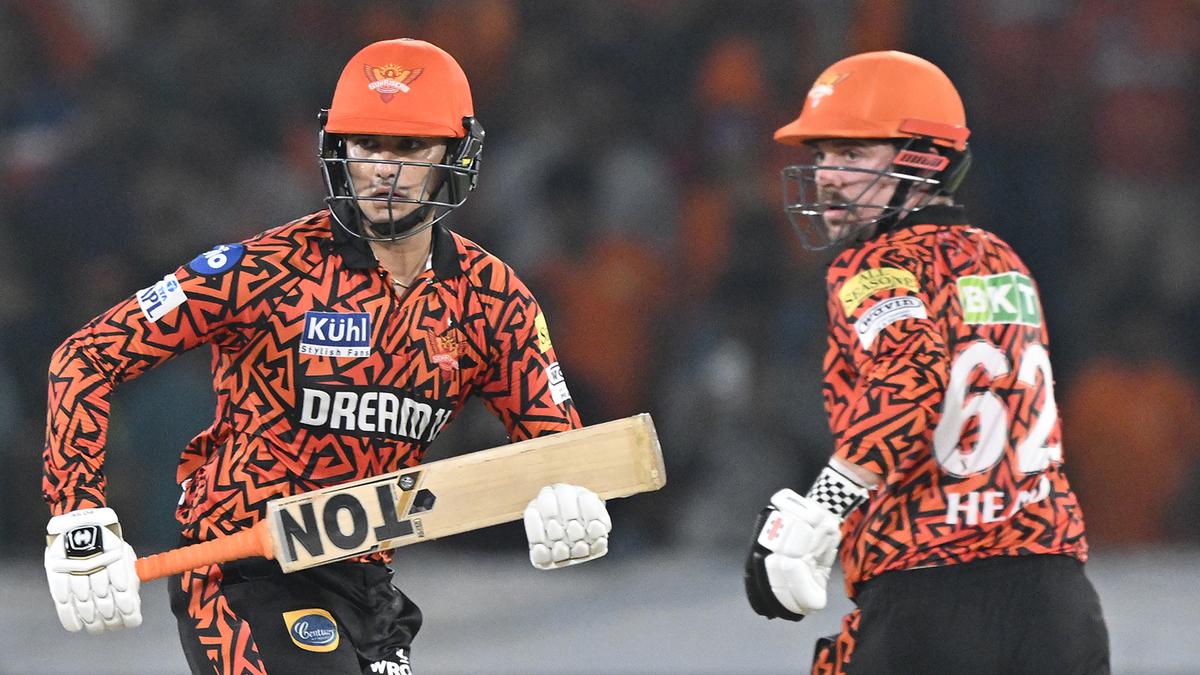
Throwing caution to the wind, openers changing the T20 landscape Premium
The Hindu
IPL 2024 showcases openers dominating with aggressive batting, setting new records and redefining T20 cricket norms.
Cricket’s long-standing reputation as a batter’s game isn’t without basis, but seldom has it manifested itself more dominantly than during IPL 2024. Scores of more than 200 are being breached with monotonous regularity, more sixes are cascading per match than ever before, the bowlers are copping more punishment than, truth be told, they should.
Armed with a greater understanding of the demands of the 20-over format and buoyed by their pre-season work which entails topping up both skills and powers, batsmen are throwing caution to the wind with absolute impunity. It will stand to reason that, with only 120 deliveries available to them, every ball needs to be maximised. Who best to maximise that than the men tasked with setting the tone, laying the foundation – the openers?
Opening the batting makes different demands, depending on the format. In Test cricket traditionally, that role has often been linked to blunting the new ball, to giving the first hour, if not more, to the bowlers, to gradually bed in and then build towards the long haul. With the ball at its newest and hardest and the bowlers at their freshest, survival more than run-making used to be the singular mantra. That has changed to a great extent in recent times, with the likes of Chris Gayle, Virender Sehwag, Matthew Hayden and more recently Zak Crawley, Ben Duckett and Yashasvi Jaiswal showing that there is more than one way to skin a cat. Even so, the majority of openers in the long-form game rely on conservatism as opposed to adventurism.
The ‘rules’ aren’t as cut-and-dried in the 50-over format, where there is an admixture of those that like to begin cautiously and those who step on the accelerator straight-away. Of course, conditions too will have a say in how batsmen approach an innings, though with almost every One-Day International now being played under lights, the threat of any early-morning swing and nip that the quicker bowlers might have envisaged is practically non-existent.
It’s the third international variant of the sport that has brought the best out of the willow-wielders. Especially those who are in the fortunate position of facing the most number of deliveries. The opening batters, the ones who seek to cash in on the field restrictions in the six PowerPlay overs, those who have vast acreage to access and who can hit through the line without fear or favour, snug and smug in the knowledge that there will be no deviation off the straight even with the brand-new white ball.
Season 17 of the IPL has brought, and kept, opening batsmen of various hues in sharp focus. Some are silken smooth and don’t believe in needing to embrace the unorthodox, such as Virat Kohli. Others are less tradition-bound; they think nothing of walking across the stumps and scooping to fine-leg, even if it is the first ball of the match. Such as Travis Head. There was a time when such daredevilry of the kind Head repeatedly indulges in used to trigger waves of shock and awe. Now, it hardly creates a ripple because even the thought-processes of those watching and observing have changed, the threshold for the ‘unexpected’ has touched unprecedented heights.
When it comes to the IPL, the unalloyed aggression of the openers can, in part, be attributed to the origin of the Impact Player, introduced in 2023. Largely designed to ensure that teams can play five specialist bowlers and don’t therefore need the ‘bits-and-pieces’ players to fill in for the fifth bowler, the Impact Player rule has potentially served the exact opposite purpose. While it is true that an additional specialist bowling option has always been employed, that has been neutralised by the influx of intrepid batsmen, either at the top of the order or in the middle, who know that 95 times out of 100, it is impossible to be bowled out within 20 overs and therefore the license to keep at it ball after ball must be utilised to the hilt.











